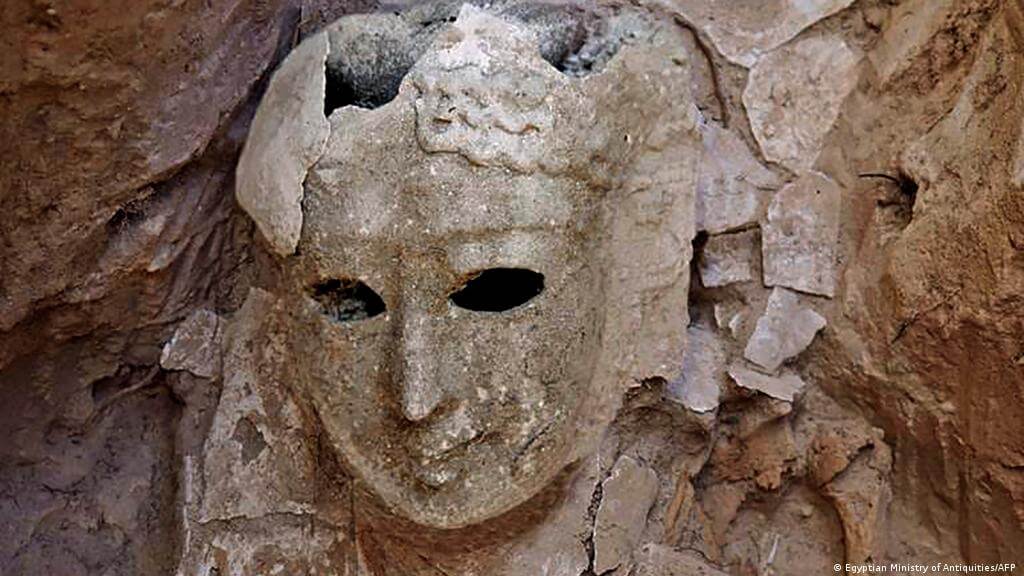By: Laura Gegge | Live Science
Archaeologists have discovered the remains of three ancient Egyptian inhabitants — a man, woman and child — outfitted with tongues of gold foil, a treasure likely intended to help them speak with gods in the afterlife, according to the Egyptian Ministry of Tourism and Antiquities.
The burials were found in two neighbouring tombs. One of the tombs, which had been plundered by grave robbers, held the remains of the woman and a 3-year-old child, and it had a limestone sarcophagus with a lid shaped like a woman, according to Ahram Online. But the man’s grave, from the 26th dynasty (664 B.C. to 525 B.C.), also known as the Saite period, was untouched.
“This is very important, because it’s rare to find a tomb that is totally sealed,” Esther Pons Mellado, co-director of the archaeological mission of Oxyrhynchus, told The National, a newspaper that covers the Middle East.
Researchers with the Archaeological Mission of Oxyrhynchus, co-run by Egyptian Ministry of Tourism and Antiquities and the University of Barcelona, made the finding at the archaeological site of Oxyrhynchus, near the modern-day town of El Bahnasa, about 100 miles (160 kilometres) south of Cairo. Oxyrhynchus was the capital of the 19th nome, or province, of Upper Egypt, according to the mission’s website. It’s known for the Oxyrhynchus papyri, or ancient Greek, Latin and other languages written on hundreds of thousands of papyri that date from the third century B.C. to the seventh century A.D.
The two newfound tombs add to the ancient capital’s history. The man’s tomb contained a mummy interred within a limestone sarcophagus with a man-shaped lid, as well as four canopic jars designed to hold the deceased’s organs, amulets including a scarab, green beads and about 400 funerary figurines, known as ushabti, crafted out of faience, or glazed ceramic, The National reported.
The identities of the man, woman and child are unknown, but archaeologists are hoping on-going excavations will reveal more clues.
The Giants of Mont’e Prama: Extraterrestrial Robots Thousands of Years Ago?
This is the second time this year that archaeologists have found gold tongues in ancient Egyptian burials. In January, the Egyptian Ministry of Tourism and Antiquities announced the discovery of a 2,000-year-old mummy with a gold tongue at Taposiris Magna, an archaeological site on Egypt’s Mediterranean coast. Perhaps that individual received a gold tongue to help him speak in the afterlife, especially to a deity like Osiris, the god of the underworld, Live Science previously reported.
* * *
NEXT UP!
Scientists Find Out If A Lashing Dinosaur Tail Could Generate A Sonic Boom
Every once in a while, scientists embark on a study to test some weird and wacky hypothesis that makes you wonder why. But let’s indulge them; it can be fun
A new study from a team of palaeontologists and aerospace engineers has simulated a dinosaur‘s tail as it lashes about, all to see whether long-necked sauropods could whip their appendages faster than the speed of sound – quick enough to produce the crack of a small, supersonic boom.
Previous research has suggested the dinos could, if their tails had a bullwhip-like structure adding length. If that were true, these herbivorous dinosaurs might have used their tails to defend themselves against predators or nosy neighbours.
* * *
READ MORE: A Dinosaur Killed On The Day of The Fatal Asteroid May Have Been Discovered
Interesting! Giant ‘Death Shadow’ Dinosaur Found In Argentina Is Largest Megaraptor On Record
Enjoyed it? Please take a moment to show your support for Collective Spark.
We’d love to hear from you! If you have a comment about this article or if you have a tip for a future Collective Spark Story please let us know below in the comment section.

